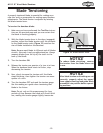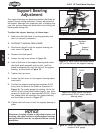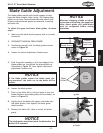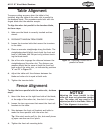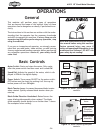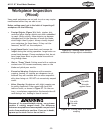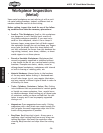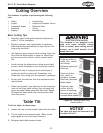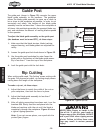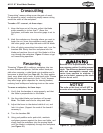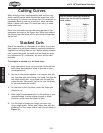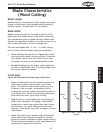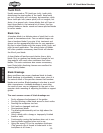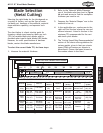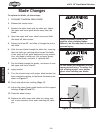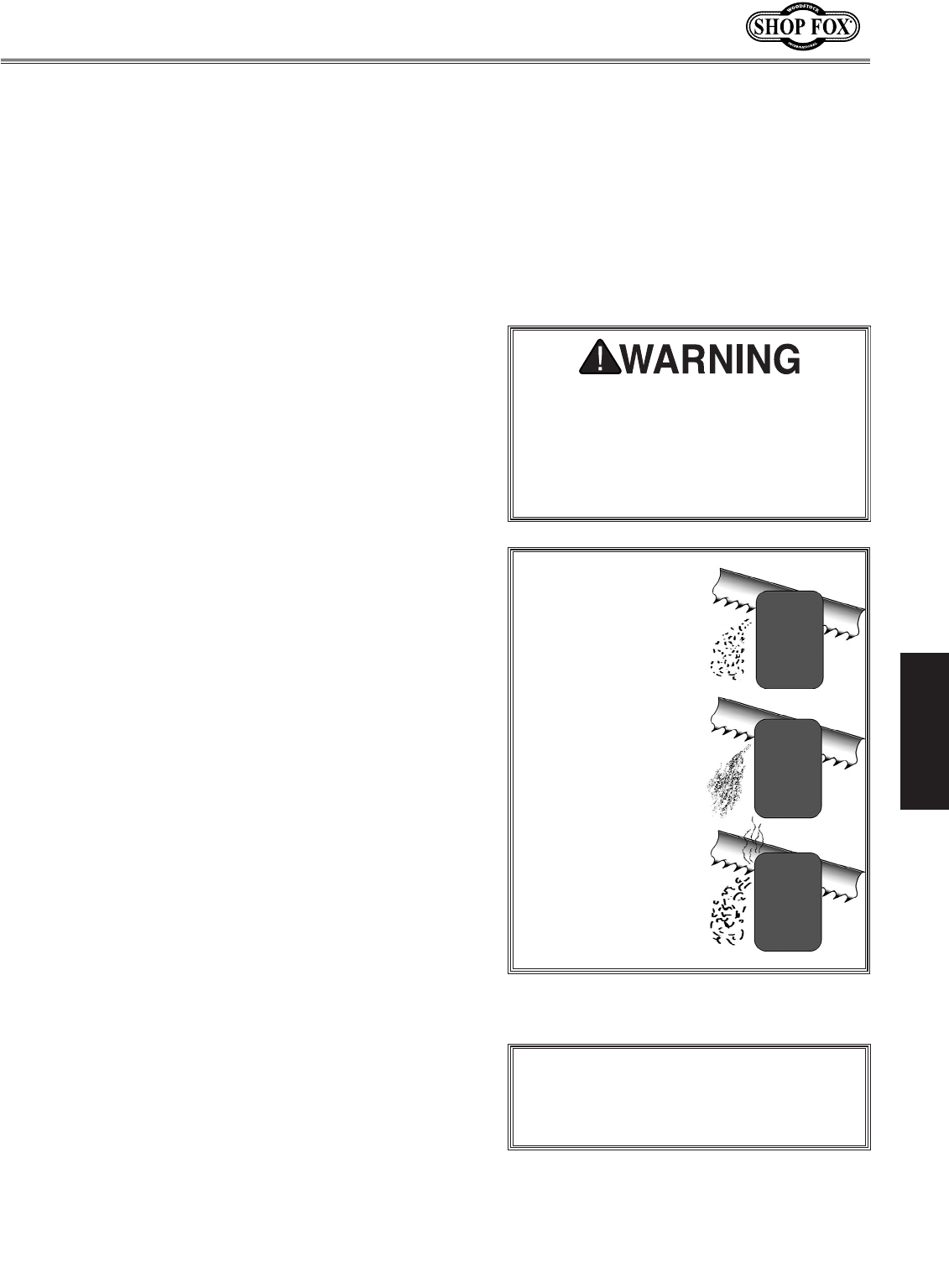
-27-
M1113 18" Wood/Metal Bandsaw
OPERATIONS
Cutting Overview
The bandsaw is capable of performing the following
cuts:
Figure 38. Reading metal chip
characteristics.
Chips are width of
tooth, thin, curled,
and silvery:
Optimum speed and
feed rate.
Chips are
silvery,
thin, small, or
powdery: Increase
feed rate; decrease
blade speed.
Chips are large,
curled, blue or
brown, or smoking:
Decrease feed rate
;
increase blade speed
.
Table Tilt
To tilt the table, do these steps:
1. Loosen the two trunnion knobs underneath the table.
2. Tilt the table to the desired angle. (Refer to the
angle gauge on the front table trunnion.)
3. Retighten both table-tunnion knobs.
NOTICE
The table stop must be removed to tilt
the table left of 0°.
• Crosscutting
• Simple and Complex Curves
• Duplicate Parts
• Circles
• Beveled Curves
• Miters
• Angles
• Compound Angles
• Resawing
• Ripping
Basic Cutting Tips
• Keep the upper blade guide assembly adjusted to
within 1" of the workpiece.
• Replace, sharpen, and clean blades as necessary.
Make adjustments periodically to keep the saw run
-
ning in top condition.
• Use light and even pressure while cutting. Light con
-
tact with the blade makes it easier to follow lines
and prevents extra friction, which reduces blade
life.
• Avoid twisting the blade when cutting around tight
corners. Allow the blade to saw around the corners.
• Misusing the saw or using incorrect techniques is
unsafe and results in poor cuts. Remember—the
blade does the cutting with the operator’s guidance.
• Do not start the machine with the workpiece touch
-
ing the blade.
• When cutting metal, pay attention to the character
-
istics of the chips when cutting—they are good indi
-
cators of proper blade speed and feed rate.
Figure
38 shows the basic metal chip characteristics and
what they mean.
ELECTROCUTION HAZARD
This bandsaw is not designed to be
used with water soluable cutting
fluid or coolant when cutting metals.
Instead, use a small amount of oil-
based lubricant.



